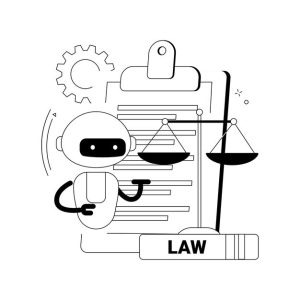Artificial Intelligence (AI) is no longer the buzzword in the legal environment- it is becoming a part of a law firm culture. The AI has helped legal professionals create contracts, examine compliance and verify it faster and without mistakes, and, therefore, have sufficient time to think constructive legal recommendation. Nevertheless, like any other tool, it is necessary to learn how to apply AI.
This blog will give you some tips and tricks on how to work with AI in legal documents, what aspects of AI-based products to pay attention to, and the mistakes to avoid. This guide is offered to those who are at the stage of first discovering AI or want to optimize their work process.
Why AI for Legal Documents?
A lawyer has never had a stress-free job, having to meet deadlines, follow some rules and advice and being overwhelmed by a pile of papers. AI is coming in to take some of the more time-consuming, repetitive work, such as producing boilerplate documents or ensuring consistency of standard clauses. The result? More time for strategic thinking, fewer mistakes, and faster turnaround for clients.
Here’s what AI can do in the context of legal documents:
- It accelerates the drafting process through auto-filling standard language or missing clauses, which need to be identified.
- Increase the precision by indicating inconsistency or out-of-date terms.
- Make sure that the provisions of ever-evolving legal standards and regulations are followed.
- Decrease the burden of document management to reduce time spent on document organization and tagging of contracts, affidavits, as well as templates.
When used right, AI can streamline your practice and even become a competitive edge.
What Types of Legal Documents Can AI Handle?
Modern AI tools like Ai law gpt are surprisingly versatile. They’re designed to work across a wide range of legal documents, including:
- Contracts – Automate drafting and revisions, keeping everything compliant and consistent.
- Wills & Trusts – Reduce the chance of human error and ensure all key provisions are addressed.
- Affidavits and Declarations – Speed up preparation and review, especially for routine or similar cases.
- NDAs, POAs, and Other Templates – Create personalized documents from the template with only a few clicks.
AI can change the game in case your practice involves repetitive documents or template documents.
Features to Look For in an AI Legal Tool
Not all legal AI platforms are created equal. When evaluating a tool, here are the must-have features to keep in mind:
- Wise automation – Seek out a system which does more than fill in blanks. The most efficient tools are intelligent and able to propose the relevant clauses depending on the type of case or jurisdiction.
- Pre-made templates – A powerful set of ready templates will make the start of the work easier and more consistent.
- Built-in compliance checks – This is a feature that has the ability to highlight uncompliant language or out-dated material.
- Integration – Your AI tool should work seamlessly with your existing contract management system or document repository.
Ai law gpt is one of the platforms that combine all these functions and may cut down drafting time by 90%. It is designed to appeal to legal professionals in particular, and it allows simultaneous automation and oversight functions, to guarantee accuracy and observance.
Choosing the Right AI Tool
When choosing a tool like Ai law gpt or others in the space, consider the following:
- Cost vs. ROI – Do the calculations and ensure that what you receive (in time savings, and fewer mistakes) is worth the investment.
- Scalability – Can the tool grow with your practice? As you add more clients, staff, or document types, the tool should adapt.
- Ease of use – A complicated system will sit unused. Look for intuitive design and clear onboarding resources.
- Customer support – Quick support particularly during the initial stages of adoption of the software.
It is also essential to review the background of the applied technology, inquire about the training of the AI, the updating frequency, and the experience of the developers with legal tech.
Legal and Ethical Considerations
There are ethical and legal concerns you have to take into consideration when you introduce AI in legal practice. Is it alright to use AI to make decisions? And then what happens in case the AI has done something wrong?
Here are some guiding principles:
- Transparency – Be aware about what your AI system is up to behind the scenes. When it is suggesting language, know the reasoning behind it.
- Accountability – AI tools are there to support your professional judgment rather than to take their place.
- Fairness and Bias – AI that has been trained with biased information can carry the same bias. Outputs should always be validated particularly in sensitive cases.
After all, Artificial Intelligence must serve as an optimization of your abilities, rather than an overpowering.
Tips for Implementation
Rolling out AI in your legal practice doesn’t have to be complicated. Here’s a simple framework to follow:
- Start small – Test the AI tool and use just one kind of document (such as NDAs or lease agreements) to begin with.
- Train your team – Everyone should know the features and the weaknesses of the tool. Where possible, give practical training.
- Measure impact – Measure the amount of time saved, the frequency of the revision, and client satisfaction withdrawn.
With Ai law gpt, implementation is broken into three simple steps:
- Upload a sample document or deal.
- Answer a few AI-guided questions.
- Review your draft and finalize
Common Pitfalls to Avoid
As with any technology, using AI in legal work comes with a learning curve. Watch out for these mistakes:
- Over-reliance on automation – AI can achieve a lot but it is not made perfect. Always review final drafts with a legal eye.
- Skipping validation – Never assume the AI’s output is 100% accurate or up-to-date. Spot-check important clauses and consult trusted sources.
- Ignoring the human element – Your clients value your insight and judgment. AI is used as a means but not a substitute to empathy or experience.
Looking Ahead: The Future of AI in Law
The rate of legal AI innovation is simply increasing. We have tools that are able to comprehend more of natural language, fit into particular practice domains, and in some instances project the risks of litigation using document analysis.
This doesn’t mean lawyers will become obsolete. Quite the opposite—your role will evolve. As AI handles the mechanical tasks, your expertise, interpretation, and client relationships will become even more central.
Final Thoughts
AI does not come to replace you in the legal practice, it comes to make you intellectually more competent. Through the adoption of such AI-powered tools as Ai law gpt, you will be able to limit repetitive work, achieve consistency, and pay better attention to more valuable tasks.
The right balance is the key: it is better to delegate the difficult part to the AI but retain the control over the output. The future of legal work can be navigated with the correct frame of mind and with the correct tools.
Ready to transform how you draft legal documents?
Start your journey with Ai law gpt and see how automation can elevate your legal practice—while keeping your judgment front and center.










